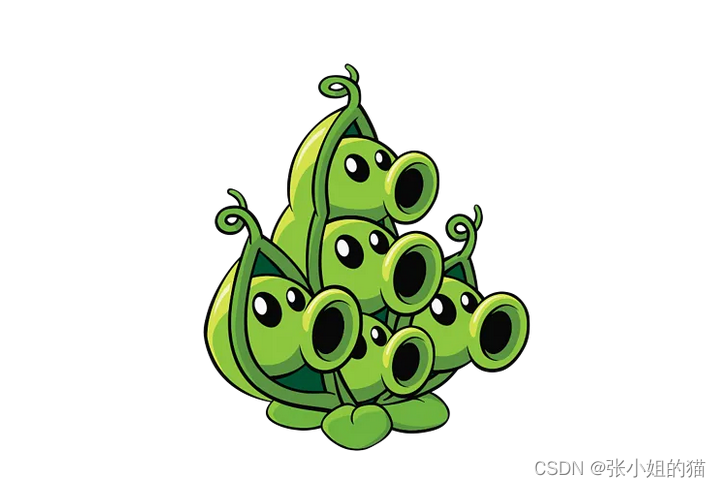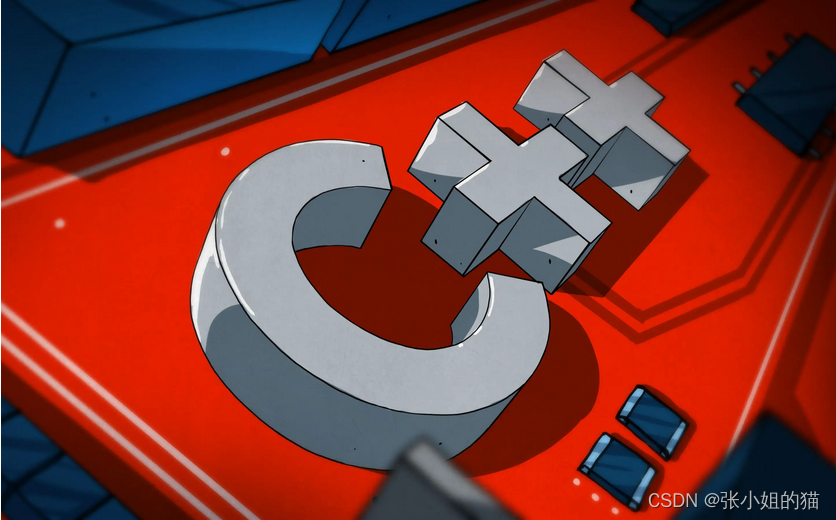🌈欢迎来到C++专栏~~list的使用
- (꒪ꇴ꒪(꒪ꇴ꒪ )🐣,我是Scort
- 目前状态:大三非科班啃C++中
- 🌍博客主页:张小姐的猫~江湖背景
- 快上车🚘,握好方向盘跟我有一起打天下嘞!
- 送给自己的一句鸡汤🤔:
- 🔥真正的大师永远怀着一颗学徒的心
- 作者水平很有限,如果发现错误,可在评论区指正,感谢🙏
- 🎉🎉欢迎持续关注!

list的使用

一. list的介绍
list即带头双向循环链表,支持在任意位置O(1)的插入和删除

二. list的构造函数

方法一:无参构造
list<int> lt1; //构造int类型的空容器
方法二:n个val值构造
list<int> lt2(10,2)//构造10个值为2的int容器
方法三:拷贝构造
list<int> lt3(lt2)//lt2拷贝构造给lt3
方法四:迭代器区间构造
string s ("hello world")
list<int> lt4(s.begin(), s.end());
三. list的插入 & 删除
🎨push_front和pop_front
头插 头删
int main()
{
list<int> lt;
lt.push_front(0);
lt.push_front(1);
lt.push_front(2);
for (auto e : lt)
{
cout << e << " ";
}
cout << endl;
lt.pop_front();
for (auto e : lt)
{
cout << e << " ";
}
cout << endl;
}

🎨push_back和pop_back
尾插尾删
int main()
{
list<int> lt;
lt.push_back(0);
lt.push_back(1);
lt.push_back(2);
for (auto e : lt)
{
cout << e << " ";
}
cout << endl;
lt.pop_back();
lt.pop_back();
for (auto e : lt)
{
cout << e << " ";
}
cout << endl;
}

🎨insert
list当中的insert函数支持三种插入方式:
- 指定位置插入一个数
- 指定位置插入n个val值的数
- 指定迭代器位置插入一段迭代器区间(左闭右开)
int main()
{
list<int> lt;
lt.push_back(1);
lt.push_back(2);
lt.push_back(3);
list<int>::iterator pos = find(lt.begin(), lt.end(), 3);
if(pos != lt.end())
{
lt.insert(pos, 20);
}
for (auto e : lt)
{
cout << endl;
}
cout << endl;//20 1 2 3
pos = find(lt.begin(), lt.end(), 3);
if(pos != lt.end())
{
lt.insert(pos, 5, 30);//在三的位置插入5个30
}
for (auto e : lt)
{
cout << endl;
}
cout << endl;//20 1 2 30 30 30 30 30 3
vector<int> v(2, 7);
list<int>::iterator pos = find(lt.begin(), lt.end(), 1);
if(pos != lt.end())
{
lt.insert(pos, v.begin(), v.end()); //在1的位置插入2个7
}
for (auto e : lt)
{
cout << e << " ";
}
cout << endl; //7 7 20 1 2 30 30 30 30 30 3
return 0;
}

💢问:这里的pos会失效吗?
不会,在pos位置前增加一个节点,并改变链接关系,但pos还是指向原本的位置,也不存在野指针
ps:由于find是stl各个容器都需要的,所以实现在了头文件algorithm.h中
🎨erase

int main()
{
list<int> lt;
lt.push_back(1);
lt.push_back(2);
lt.push_back(3);
list<int>::iterator pos = find(lt.begin(), lt.end(), 2);
if (pos != lt.end())
{
lt.erase(pos); //删除2
}
for (auto e : lt)
{
cout << e << " ";
}
cout << endl; //1 3 4 5
pos = find(lt.begin(), lt.end(), 4);
if (pos != lt.end())
{
lt.erase(pos, lt.end()); //删除4及其之后的元素
}
for (auto e : lt)
{
cout << e << " ";
}
cout << endl; //1 3
return 0;
}
💢灵魂发问:此处的pos会失效吗?
打印崩溃了,显而易见,删除后,再访问就是野指针了
四. list的迭代器的使用
🌊正向迭代器
话不多说,上代码
#include <iostream>
#include <list>
using namespace std;
int main()
{
list<int> lt(10, 2);
//正向遍历
list<int>::iterator it = lt.begin();
while (it != lt.end())
{
cout << *it << " ";
it++;
}
cout << endl;
return 0;
}
🌊反向迭代器
#include <iostream>
#include <list>
using namespace std;
int main()
{
list<int> lt(10, 5);
//反向迭代器遍历容器
list<int>::reverse_iterator rit = lt.rbegin();
while (rit != lt.rend())
{
cout << *rit << " ";
rit++;
}
cout << endl;
return 0;
}
五. list元素的获取
🌍fornt & back
int main()
{
list<int> lt;
lt.push_back(1);
lt.push_back(2);
lt.push_back(3);
cout << lt.front() << endl;
cout << lt.back() << endl;
return 0;
}
六. list的操作函数
⚡splice 转移

int main()
{
list<int> lt1(4, 2);
list<int> lt2(4, 6);
lt1.splice(lt1.begin(), lt2); //将容器lt2拼接到容器lt1的开头
for (auto e : lt1)
{
cout << e << " ";
}
cout << endl; //6 6 6 6 2 2 2 2
list<int> lt3(4, 2);
list<int> lt4(4, 6);
lt3.splice(lt3.begin(), lt4, lt4.begin()); //将容器lt4的第一个数据拼接到容器lt3的开头
for (auto e : lt3)
{
cout << e << " ";
}
cout << endl; //6 2 2 2 2
list<int> lt5(4, 2);
list<int> lt6(4, 6);
lt5.splice(lt5.begin(), lt6, lt6.begin(), lt6.end()); //将容器lt6的指定迭代器区间内的数据拼接到容器lt5的开头
for (auto e : lt5)
{
cout << e << " ";
}
cout << endl; //6 6 6 6 2 2 2 2
return 0;
}
ps: 容器当中被拼接到另一个容器的数据在原容器当中就不存在了。(移植技术)
⚡remove
remove函数用于删除容器当中特定元素
int main()
{
list<int> lt;
lt.push_back(1);
lt.push_back(1);
lt.push_back(1);
lt.push_back(3);
lt.push_back(2);
lt.push_back(2);
lt.push_back(1);
lt.push_back(3);
for (auto e : lt)
{
cout << e << " ";
}
cout << endl; //1 1 1 3 2 2 1 3
lt.remove(1); //删除容器当中值为1的元素
for (auto e : lt)
{
cout << e << " ";
}
cout << endl;
return 0;
}
⚡remove_if
remove_if函数用于删除容器当中满足条件的元素
bool single_digit(const int& val)
{
return val < 10;
}
int main()
{
list<int> lt;
lt.push_back(10);
lt.push_back(4);
lt.push_back(7);
lt.push_back(18);
lt.push_back(2);
lt.push_back(5);
lt.push_back(9);
for (auto e : lt)
{
cout << e << " ";
}
cout << endl; //10 4 7 18 2 5 9
lt.remove_if(single_digit); //删除容器当中值小于10的元素
for (auto e : lt)
{
cout << e << " ";
}
cout << endl; //10 18
return 0;
}
⚡unique
unique函数用于删除容器当中连续的重复元素(前提是先排序)
int main()
{
list<int> lt;
lt.push_back(1);
lt.push_back(4);
lt.push_back(3);
lt.push_back(3);
lt.push_back(2);
lt.push_back(2);
lt.push_back(3);
for (auto e : lt)
{
cout << e << " ";
}
cout << endl; //1 4 3 3 2 2 3
lt.sort(); //升序
lt.unique();
for (auto e : lt)
{
cout << e << " ";
}
cout << endl;
return 0;
}
⚡sort
算法库里面已经有一个sort 了,为什么list里也实现了一个sort?
list的空间不是连续的,算法库中的sort要求物理空间要是连续的,所以vector和string才用,快排实现的参数取中,在链表实现不了
链表的sort是归并排序实现的
int main()
{
list<int> lt;
lt.push_back(4);
lt.push_back(7);
lt.push_back(5);
lt.push_back(9);
lt.push_back(6);
lt.push_back(0);
lt.push_back(3);
for (auto e : lt)
{
cout << e << " ";
}
cout << endl; //4 7 5 9 6 0 3
lt.sort(); //默认升序
for (auto e : lt)
{
cout << e << " ";
}
cout << endl; //0 3 4 5 6 7 9
return 0;
}
📢写在最后
最近想玩植物大战僵尸了

本文含有隐藏内容,请 开通VIP 后查看

